Quarter horses are well known for their short distance speed, as they can reach high speeds in just a quarter of a mile. Because of this, many may think this horse breed has good feet, yet that is not always the case.
Do quarter horses have good feet?
Quarter horses can have good feet; however, the breed tends to have hoof issues due to genetics and because of the physically demanding sports they often participate in. Quarter horse owners should know what to look for and how to ensure their horses maintain healthy feet throughout their lives.
Part of keeping your quarter horse healthy is maintaining their feet and watching out for signs of issues. The quicker you can spot the problem, the better the chance your horse has to heal effectively without lasting problem.
Table of Contents
Do Quarter Horses Have Small Feet?
Quarter horses have small feet, which can contribute to the hoof issues that they often encounter. Many equestrians and veterinarians believe their hooves are quite small when compared to their large bodies.
Breeders have bred these horses with the intention of producing horses with small, dainty hooves. In turn, they have mostly contributed to the breed’s feet problems.
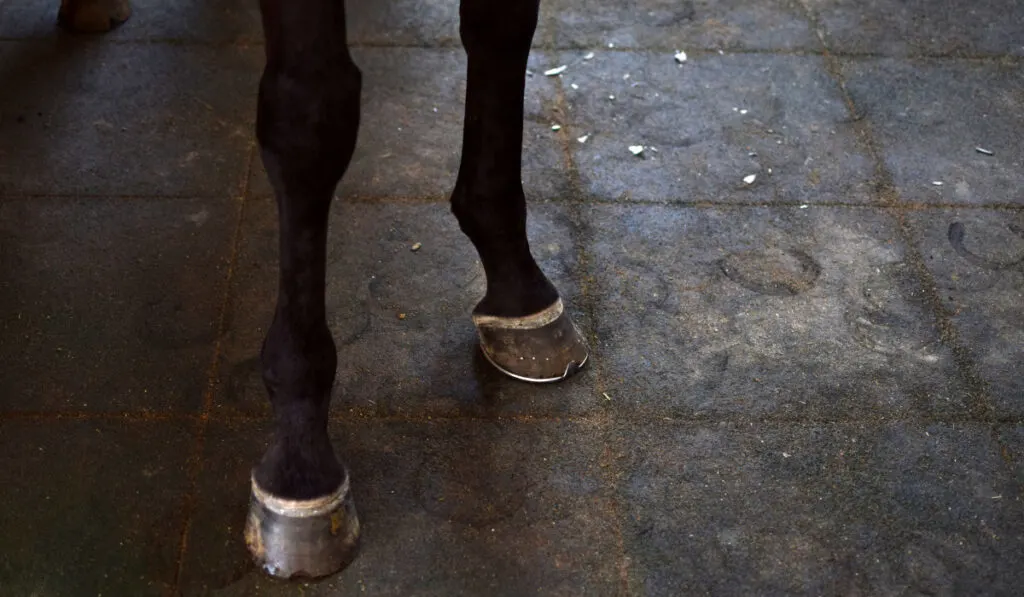
Why Do Small Feet Cause Issues in Quarter Horses?
Small feet cause issues in quarter horses because their hooves carry so much weight and pressure. This, combined with the fact that many horses within this breed compete in physically demanding sports, has led to various hoof issues.
A quarter horse’s small feet carry not only their own weight, but also the weight of a rider, a saddle, and tack. Over time, the integrity of their feet begins to suffer, and horses end up with potentially dangerous hoof ailments.
What Hoof Issues Can Quarter Horses Have?
Navicular Disease
Quarter horses can develop navicular disease, an inflammatory and often degenerative hoof disease. The infection can take a while to develop into lameness and it may only be visible intermittently.
Horses with this disease often step-toe first to reduce the pain. Veterinarians can spot signs of the disease and often use radiology scans to assist in the diagnosis.
Unfortunately, there is no cure for navicular disease, but horse owners can help manage it in numerous ways including pain relievers, shoe adjustments, and fitting shoe pads or wedges.
Hoof Wall Defects
Quarter horses can develop hoof wall defects that weaken the integrity of the hoof.
Thrush
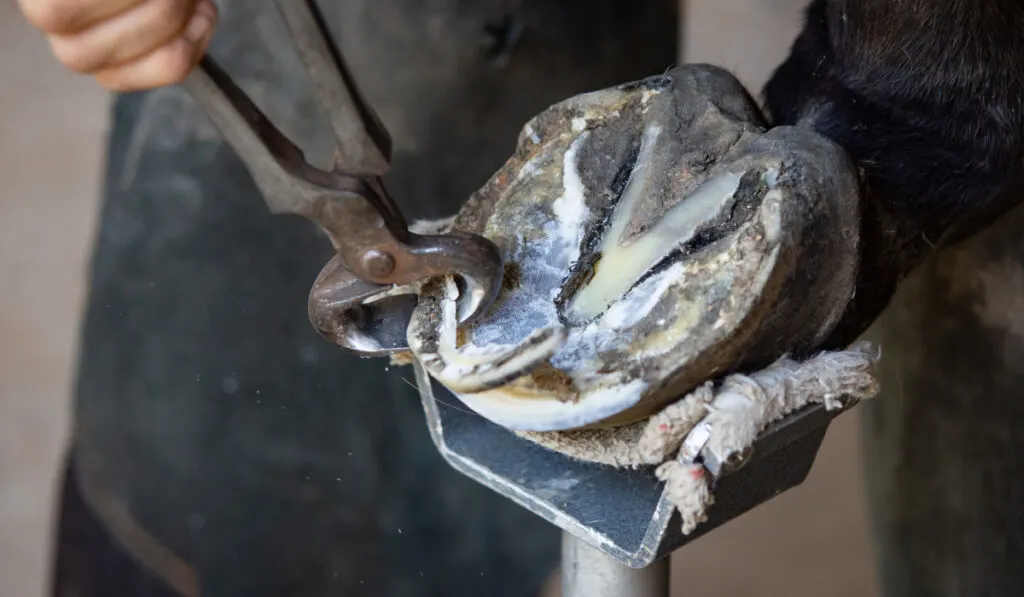
Thrush is a fungal infection that affects a horse’s hooves and often develops when a horse stands in a moist area for too long. When a horse stands in a wet and muddy pasture or an unclean stall for extended periods of time, thrush will likely occur.
Thrush deteriorates a horse’s frog, a vital tissue part of the hoof that horses rely on to absorb shock, circulate blood, and grip smooth surfaces. Horse owners can recognize thrush by the oozing black matter that seeps out along with the unpleasant odor.
Fortunately, thrush is easy to treat, and an experienced farrier will know that to do when they spot it. For horse owners, cleaning out the black discharge from the hoof, applying a thrush treatment spray, and making sure the area is clean will often do the trick.
Hoof Abscess
Quarter horses can develop hoof abscesses due to a lack of hoof care, dangerous environments, and from just being unlucky. Horses can accidentally step on nails, glass, metal, and other materials that may lead to a dangerous abscess.
Hooves are hard and it is difficult for them to swell, so instead of seeing swelling, horse owners may see the effects of an abscess. Horses that have hidden abscesses may have trouble walking and their legs may swell due to the infection.
Veterinarians are best equipped to deal with severe issues like hoof abscesses and many horse owners will have an expert veterinarian that can treat severe abscesses. It is important to have any suspected abscesses treated as soon as possible to avoid permanent injuries.
Lameness
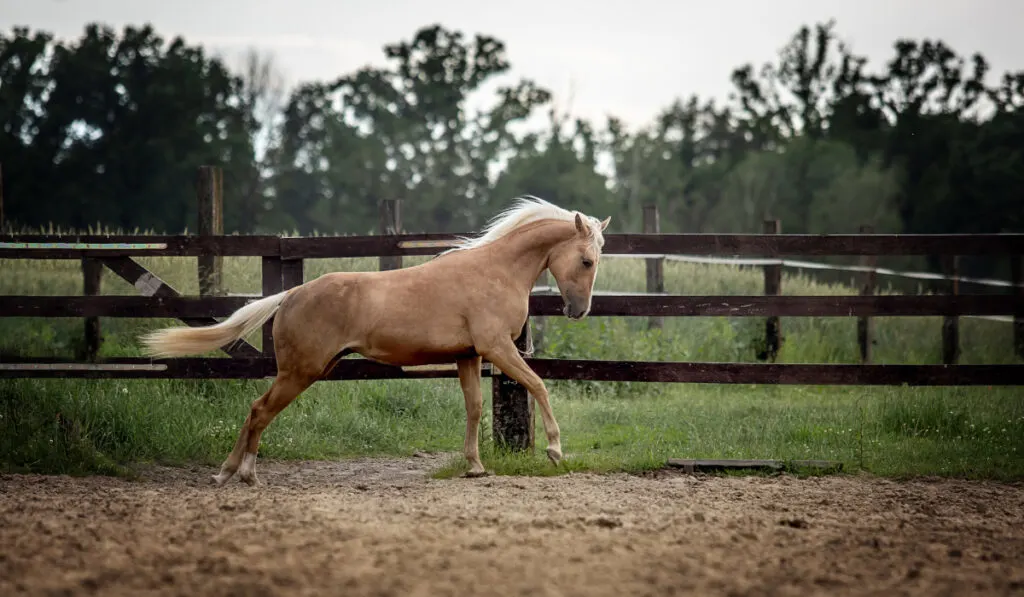
This breed often develops lameness, or an irregular gait, because of their small hooves along with environmental factors. Quarter horses may become lame due to the hoof issues previously discussed or because of other infectious, muscular, or inflammatory ailments.
Horse owners can easily see lameness in their horse by watching them walk. Their gait will be different from the usual. Owners and riders will also feel their quarter horse’s lameness when they ride the horse. Horses that are lame will favor one or more legs to reduce their pain.
This pain-relieving action leads to a noticeably unbalanced walk or ride. Horse owners may also notice that their horse does not run as fast as they normally do, or that the horse hesitates more often, or simply looks off.
How to Spot Feet Issues in Quarter Horses
- Watch how they step.
Horses suffering from navicular disease experience pain when they walk and will often step with their toes hitting the ground first to reduce the pain.
- Look for cracks in the hoof wall.
It is important to regularly examine your quarter horse’s hooves, paying close attention to the wall of each hoof. If you notice a crack developing, reach out to your farrier immediately.
- Pay attention to unbalanced walking or lameness.
If you think your horse is walking differently, pay attention to its gait and see if it is favoring one foot or both front feet. If it seems continuous or comes and goes, have a veterinarian check them out.
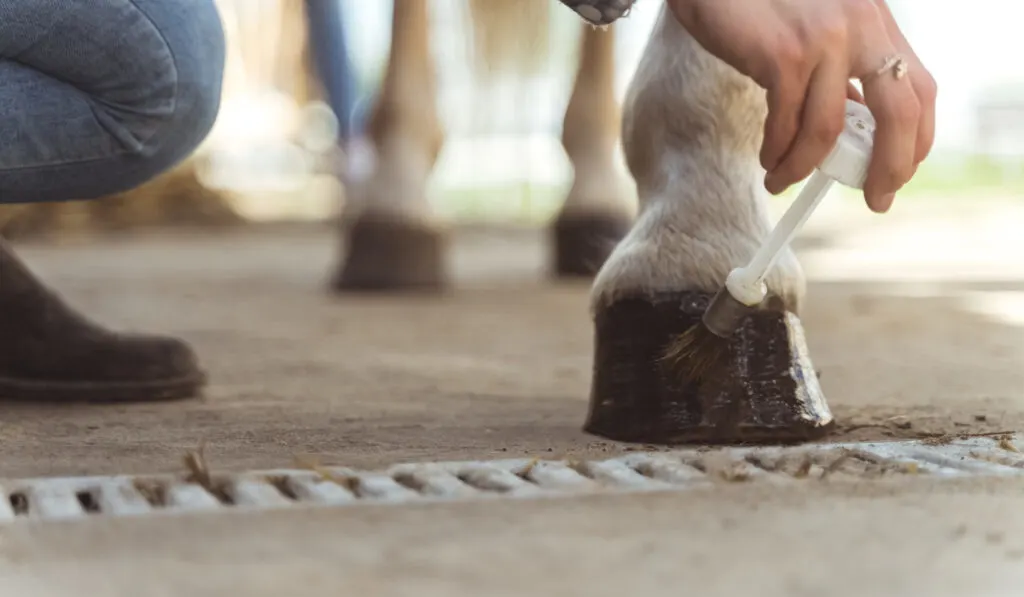
How to Maintain Good Feet in Quarter Horses?
Preventing issues and maintaining your quarter horse’s feet is key to its health and wellbeing.
Regular Farrier Visits
Quarter horses need regular hoof trimming to maintain healthy feet. Farriers can spot issues early as well and work to prevent or treat hoof problems before they cause lameness.
Find an Experienced Farrier
Unfortunately, farriers are not all the same and an inexperienced farrier can wreak havoc on your horse’s hooves. Make sure your horse has a good farrier and ask for a second opinion if your horse’s hoof health is not their priority.
Keep Their Environment Dry
When a horse stands in a moist or wet area for too long, their hooves can suffer. Horses can develop a fungal infection called thrush when their environment is too moist or wet for extended periods of time.
Provide Proper Nutrition
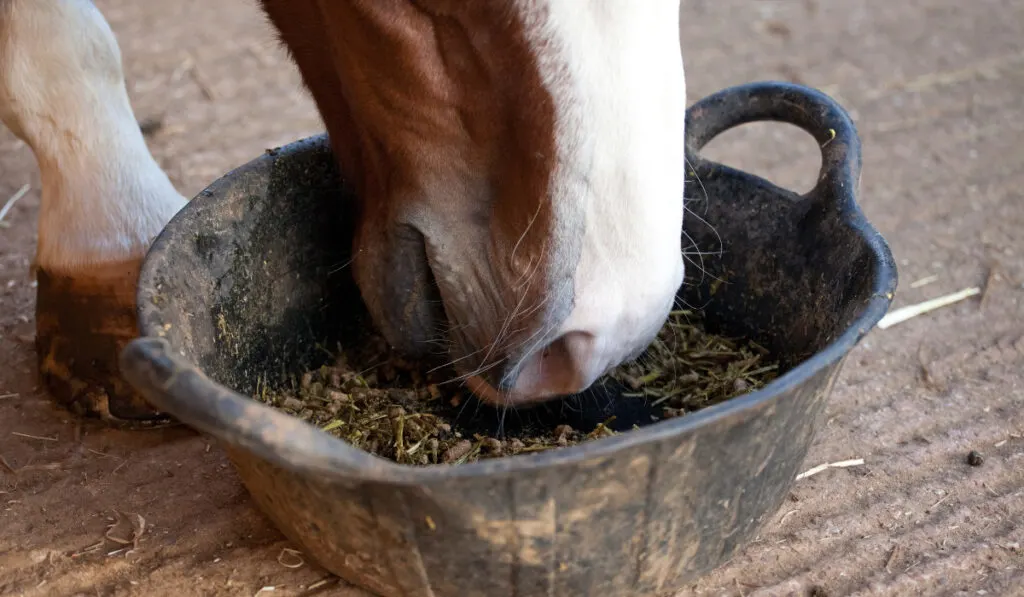
It is often forgotten about, but proper nutrition helps prevent or resolve many hoof problems. Horses require vitamins and minerals to keep their hooves in the best possible condition.
Seek Treatment for Issues Immediately
When quarter horse owners spot issues with hoofs, they need to get it looked at by a professional as soon as possible. The quicker horse owners begin treatment, the quicker their horse can be on the mend.
Can Quarter Horses Be Barefoot?
Quarter horses can be barefoot, but they will still need regular hoof trimming by an experienced farrier. If a horse’s hooves are not trimmed regularly, it can have dangerous and detrimental effects on their gait, hooves, and overall health.
Many riders prefer to keep their horses with shoes, but some find that their horses do fine without them. It really comes down to personal choice and what works best for the horse.
If their hoof health begins to decline when barefoot, seek the opinion of a veterinarian or farrier and discuss options.
Instead of shoes, horse owners can opt for boots that Velcro on and have built-in shoes that are essentially removable. This is a great option for horse owners that do not want metal shoes nailed onto their horse’s hooves but still want the benefit of shoes when needed.
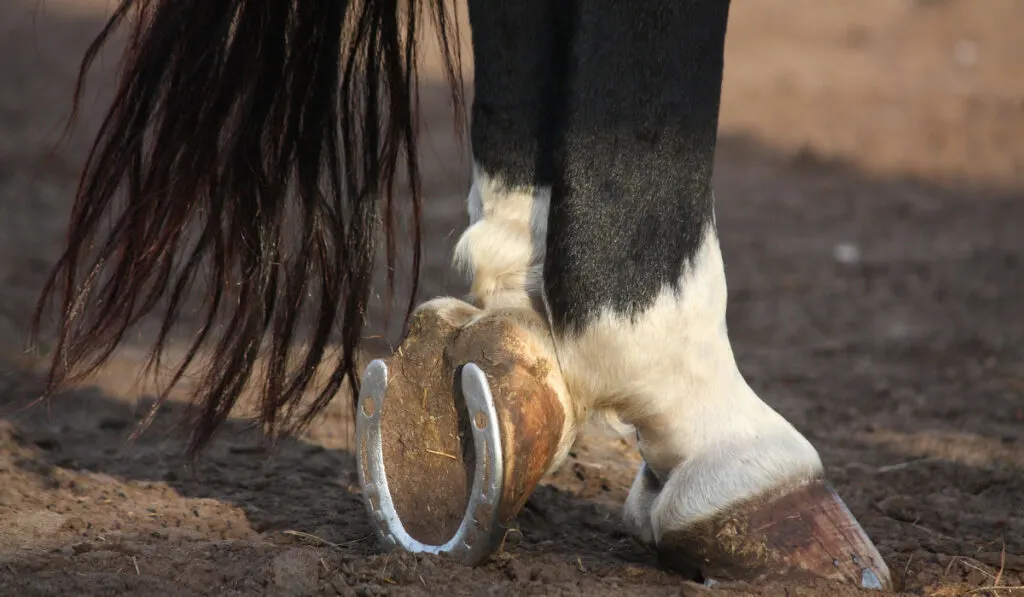
Do Quarter Horses Have to Have Shoes?
Quarter horses do not need to have shoes on their feet, unless they are being ridden regularly. Again, just because they do not have shoes does not mean you do not need to have a farrier.
Quarter horses that do not have shoes on still need to have regular hoof trims to keep their hooves from overgrowing. Horse hooves need trimming about every 6 to 12 weeks depending on the time of year and the type of sport they compete in.
Horse hooves must also stay balanced, which means if they lose a shoe, a farrier needs to replace it as soon as possible. Quarter horses that compete in equine sports or even regular trail riding should have shoes on to help protect their hooves.
Final Thoughts
The Quarter horse is an amazing horse breed, but like most carefully cultivated breeds, it does have its fallacies. There is no denying that Quarter horses have small feet and they do have issues with their feet as a result. But with the right care and dedication, you can keep your horse’s feet as good as humanly possible.
Resources
I used my knowledge and experience with Quarter horses as well as the following resources in writing this article.
- https://www.americanfarriers.com/articles/1981-check-those-feet-carefully-before-buying-that-horse
- https://ker.com/equinews/the-hoof-and-its-relation-to-balance-and-soundness/
- https://www.extension.iastate.edu/equine/navicular-disease-western-pleasure-horses
- https://extension.umn.edu/horse-health/caring-your-horses-hooves
- https://en.wikipedia.org/wiki/Frog_(horse_anatomy)
- https://www.aqha.com/-/treating-thrush
- https://vetericyn.com/blog/how-to-treat-a-horse-with-thrush-a-comprehensive-guide/
- https://extension.umn.edu/horse-health/hoof-abscesses

